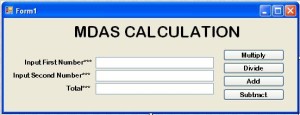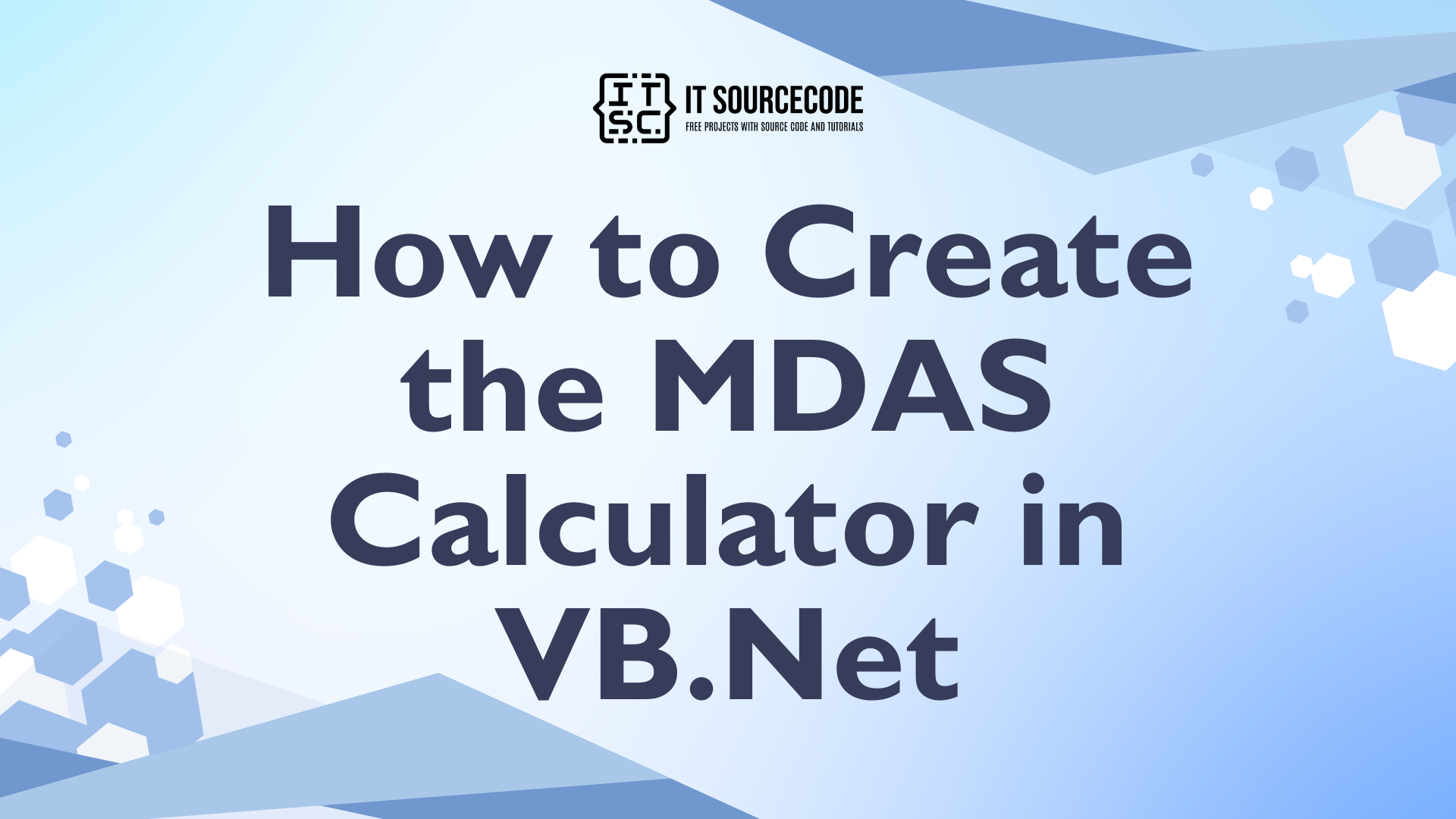How to Create the MDAS Calculator in VB.Net
In this 2019 tutorial about VB.Net Code For Calculator will teach you a step by step process on how to create an MDAS Calculator in VB.NET Code with examples.
MDAS is the four fundamentals operation in solving the mathematical equation. MDAS stands for MULTIPLICATION, DIVISION, ADDITION, and SUBTRACTION.
What is Visual Basic’s purpose?
The third-generation programming language was created to aid developers in the creation of Windows applications. It has a programming environment that allows programmers to write code in.exe or executable files.
They can also utilize it to create in-house front-end solutions for interacting with huge databases. Because the language allows for continuing changes, you can keep coding and revising your work as needed.
However, there are some limits to the Microsoft Visual Basic download. If you want to make applications that take a long time to process, this software isn’t for you.
That implies you won’t be able to use VB to create games or large apps because the system’s graphic interface requires a lot of memory and space. Furthermore, the language is limited to Microsoft and does not support other operating systems.
What are the most important characteristics of Visual Basic?
Microsoft Visual Basic for Applications Download, unlike other programming languages, allows for speedier app creation. It has string processing capabilities and is compatible with C++, MFC, and F#.
Multi-targeting and the Windows Presentation Framework are also supported by the system, allowing developers to create a variety of Windows apps, desktop tools, metro-style programs, and hardware drivers.
I’m going to use Visual Studio 2008 for creating this desktop application.
The VB.Net Code For Calculator use in this tutorial can run in any higher version of VS
Let’s begin the VB.Net Code For Calculator :
Open the Visual Studio 2008 and create a new Windows Form Application. After that, set the Form just like this.
After setting up the Form, double click the “Multiply” Button and set up the formula for the multiplication method.
' Private Sub btnmul_Click(ByVal sender As System.Object, ByVal e As System.EventArgs) Handles btnmul.Click 'SET THE VAL TO RETURN A NUMERIC VALUE THAT CONTAINS A NUMBER IN A STRING VALUE txttot.Text = Val(txtFnum.Text) * Val(txtSnum.Text) End Sub
And then, these are the formula for the Divide, Add and Subtract Buttons.
'THIS IS FOR DIVISION Private Sub btndiv_Click(ByVal sender As System.Object, ByVal e As System.EventArgs) Handles btndiv.Click txttot.Text = Val(txtFnum.Text) / Val(txtSnum.Text) End Sub 'THIS IS FOR ADDITION Private Sub btnadd_Click(ByVal sender As System.Object, ByVal e As System.EventArgs) Handles btnadd.Click txttot.Text = Val(txtFnum.Text) + Val(txtSnum.Text) End Sub 'THIS IS FOR SUBTRATION Private Sub btnsub_Click(ByVal sender As System.Object, ByVal e As System.EventArgs) Handles btnsub.Click txttot.Text = Val(txtFnum.Text) - Val(txtSnum.Text) End Sub
After setting up the formula in each corresponding Buttons, go back to the Form Design, double click the Form and disable the TextBox(txttot) in the first load of the Form.
Private Sub Form1_Load(ByVal sender As System.Object, ByVal e As System.EventArgs) Handles MyBase.Load txttot.Enabled = False End Sub
Finally, these are the full codes that you have made.
Public Class Form1 'THIS IS FOR MULTIPLICATION Private Sub btnmul_Click(ByVal sender As System.Object, ByVal e As System.EventArgs) Handles btnmul.Click 'SET THE VAL TO RETURN A NUMERIC VALUE THAT CONTAINS A NUMBER IN A STRING VALUE txttot.Text = Val(txtFnum.Text) * Val(txtSnum.Text) End Sub 'THIS IS FOR DIVISION Private Sub btndiv_Click(ByVal sender As System.Object, ByVal e As System.EventArgs) Handles btndiv.Click txttot.Text = Val(txtFnum.Text) / Val(txtSnum.Text) End Sub 'THIS IS FOR ADDITION Private Sub btnadd_Click(ByVal sender As System.Object, ByVal e As System.EventArgs) Handles btnadd.Click txttot.Text = Val(txtFnum.Text) + Val(txtSnum.Text) End Sub 'THIS IS FOR SUBTRATION Private Sub btnsub_Click(ByVal sender As System.Object, ByVal e As System.EventArgs) Handles btnsub.Click txttot.Text = Val(txtFnum.Text) - Val(txtSnum.Text) End Sub Private Sub Form1_Load(ByVal sender As System.Object, ByVal e As System.EventArgs) Handles MyBase.Load txttot.Enabled = False End Sub End Class
You can also download the complete source code and run it on your computer.
DOWNLOAD HERE
For Inquiries:
if you have any questions or suggestions about this calculator in vb.net code, please let us know by dropping a comment below.

